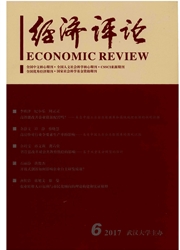

 中文摘要:
中文摘要:
20世纪80年代以后,世界主要国家和地区在反垄断法实施中越来越多地采用SSNIP方法来界定相关市场。SSNIP方法也称做“假定的垄断者测试”,检验的是“小而显著的非暂时性价格上涨”是否能使假定的垄断者有利可图。SSNIP方法在理论上明显优于产品功能界定法,然而在反垄断司法实践中,SSNIP方法也存在着明显的局限性。为了弥补SSNIP方法的缺陷,欧美国家的反垄断当局在司法实践中对SSNIP方法进行了改进,并采用多种替代的辅助测定方法,形成了相互映照的相关市场界定的方法体系。我国在刚刚颁布的《相关市场界定指南》中采用了SSNIP方法。考虑到中国的特殊国情,在反垄断司法实践中需要对SSNIP方法进行改进和完善,以保证反垄断政策的有效实施。
 英文摘要:
英文摘要:
The SSNIP method is usually called as " the hypothetical monopolist test" , which is used to test whether a small but significant and non -transitory increase in price could cause the hypothetical monopolist profitable. The SSNIP method is superior to some traditional methods of defining market monopoly. However, in actual judicial practice of anti -monopoly, the SSNIP method still has some obvious limitations. In order to remedy flaws of the SSNIP method, the antitrust authorities in Europe and America have adopted many kinds of auxiliary test method to improve the SSNIP method, and have formed the method system of defining relevant market. The SSNIP method has been introduced to The Guide to Defining Relevant Markets recently issued in China. It is necessary to make improvement to fit the SSNIP method to China' s realities.
 同期刊论文项目
同期刊论文项目
 同项目期刊论文
同项目期刊论文
 期刊信息
期刊信息
